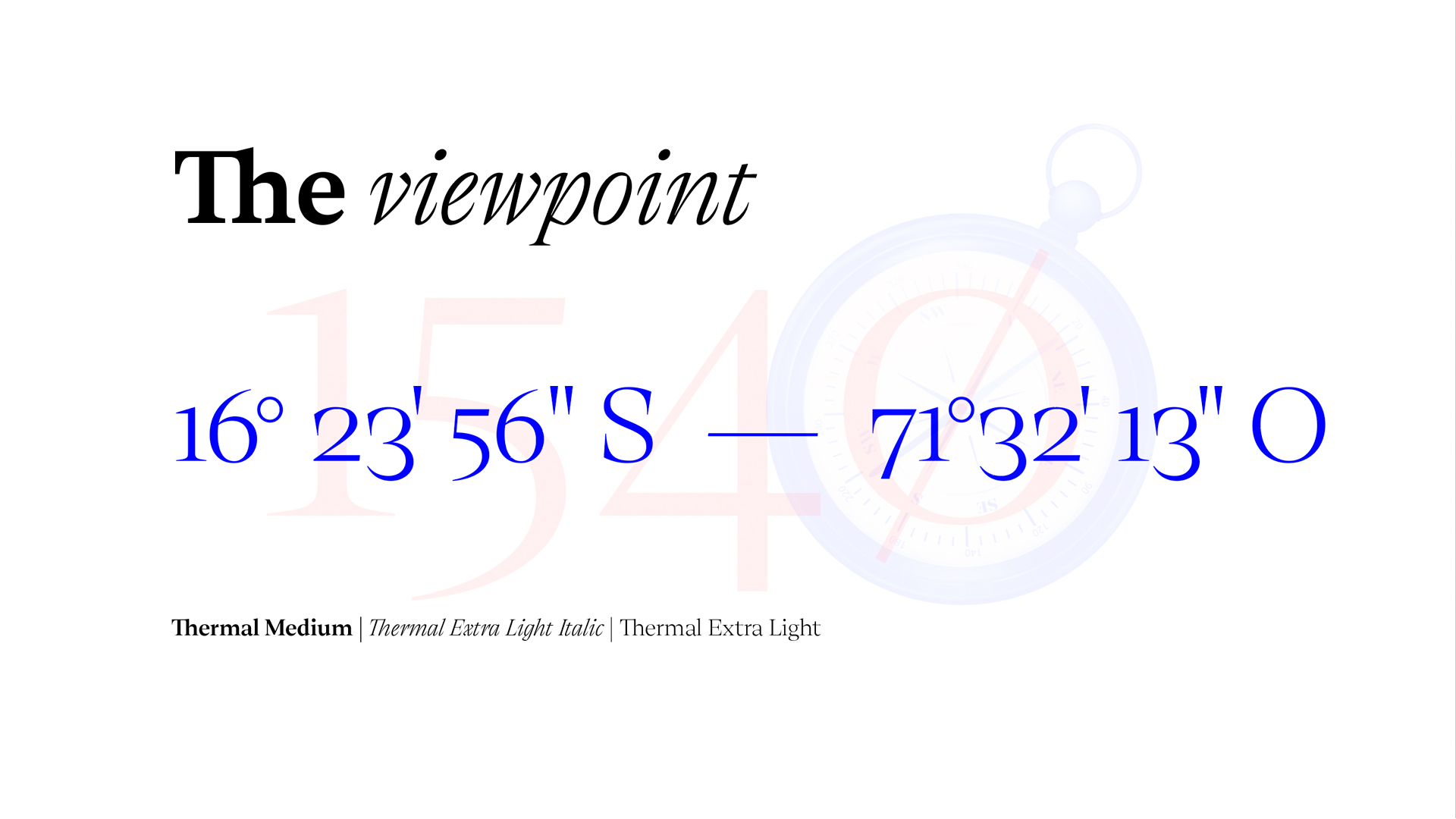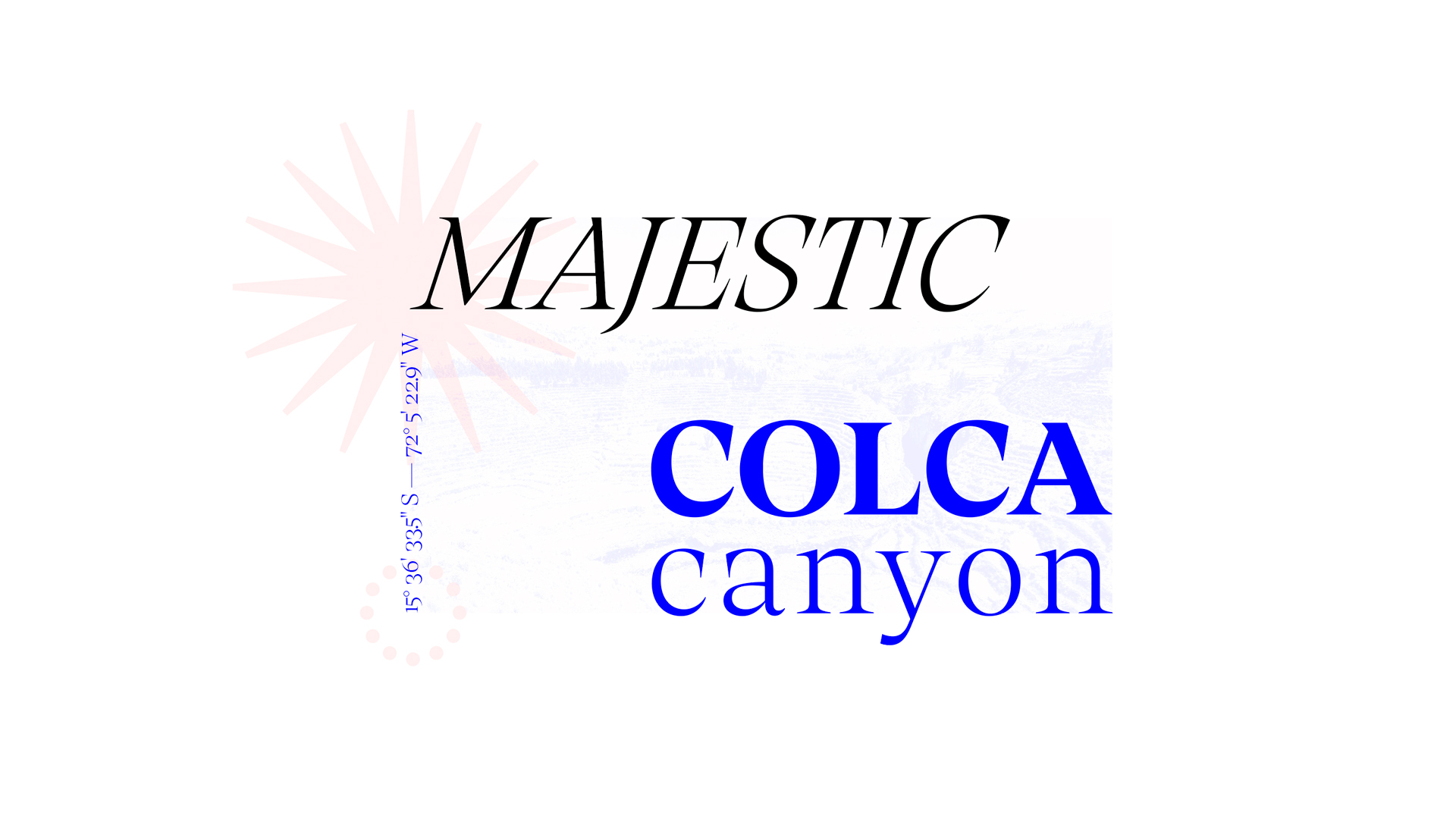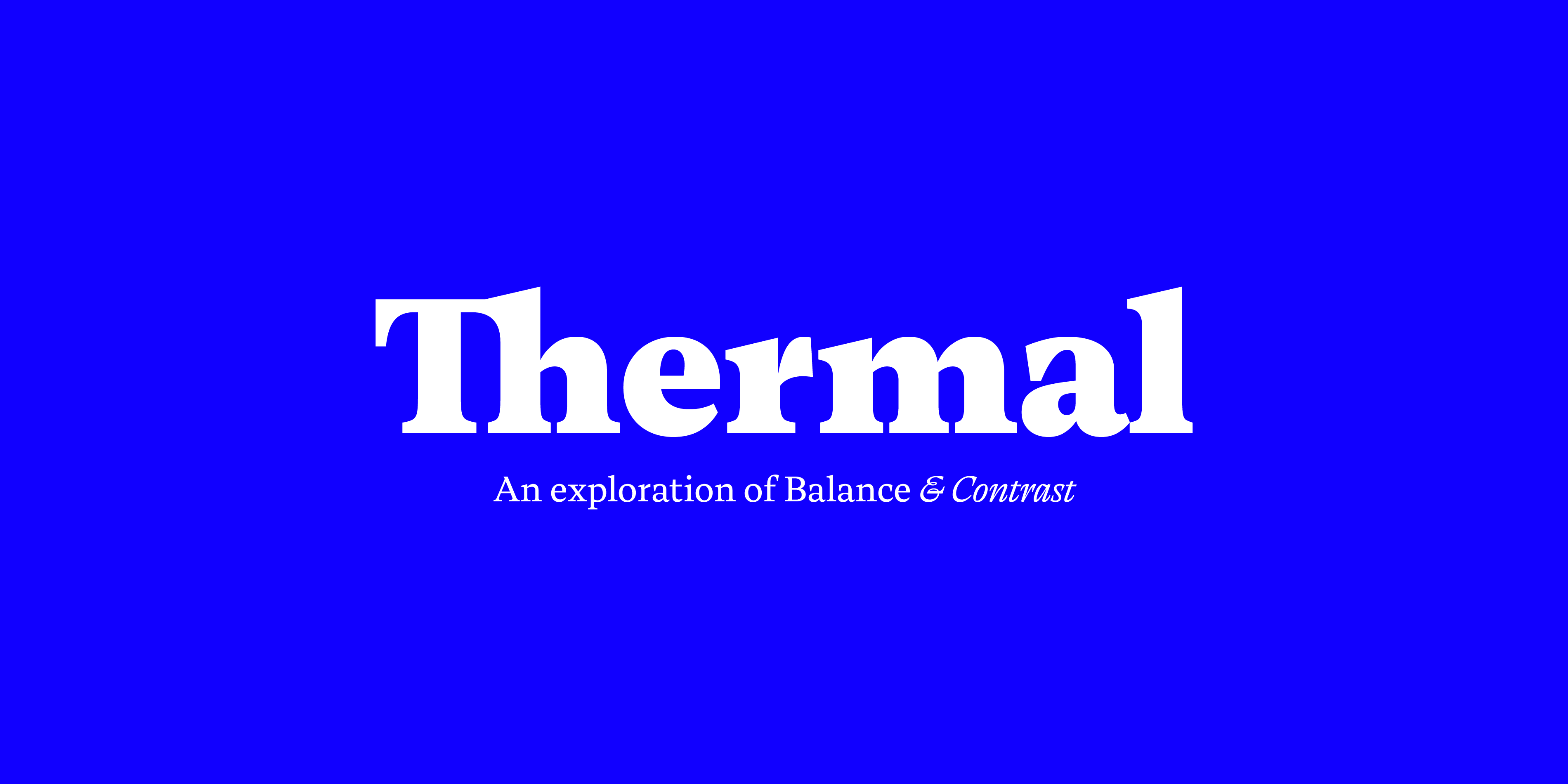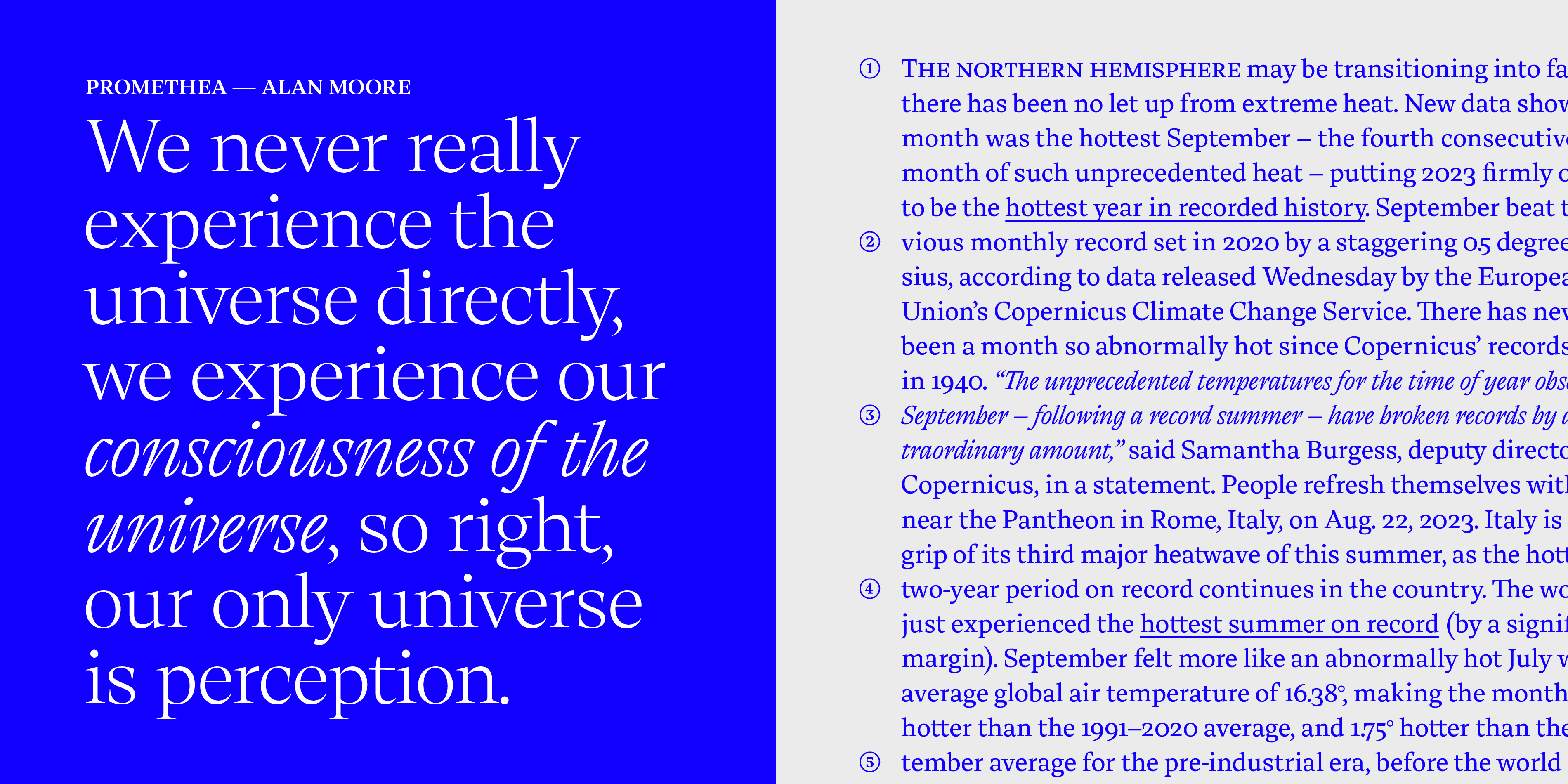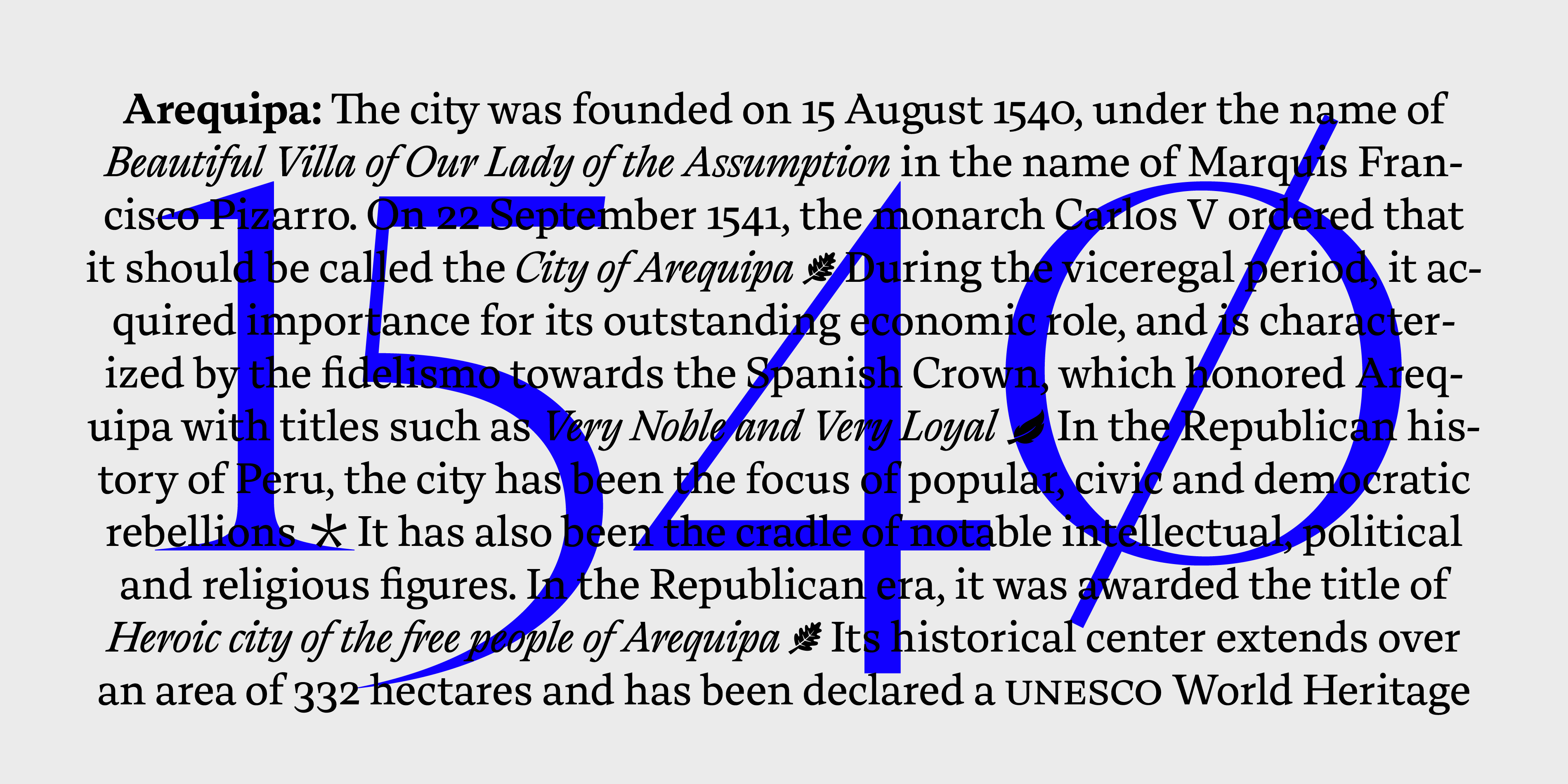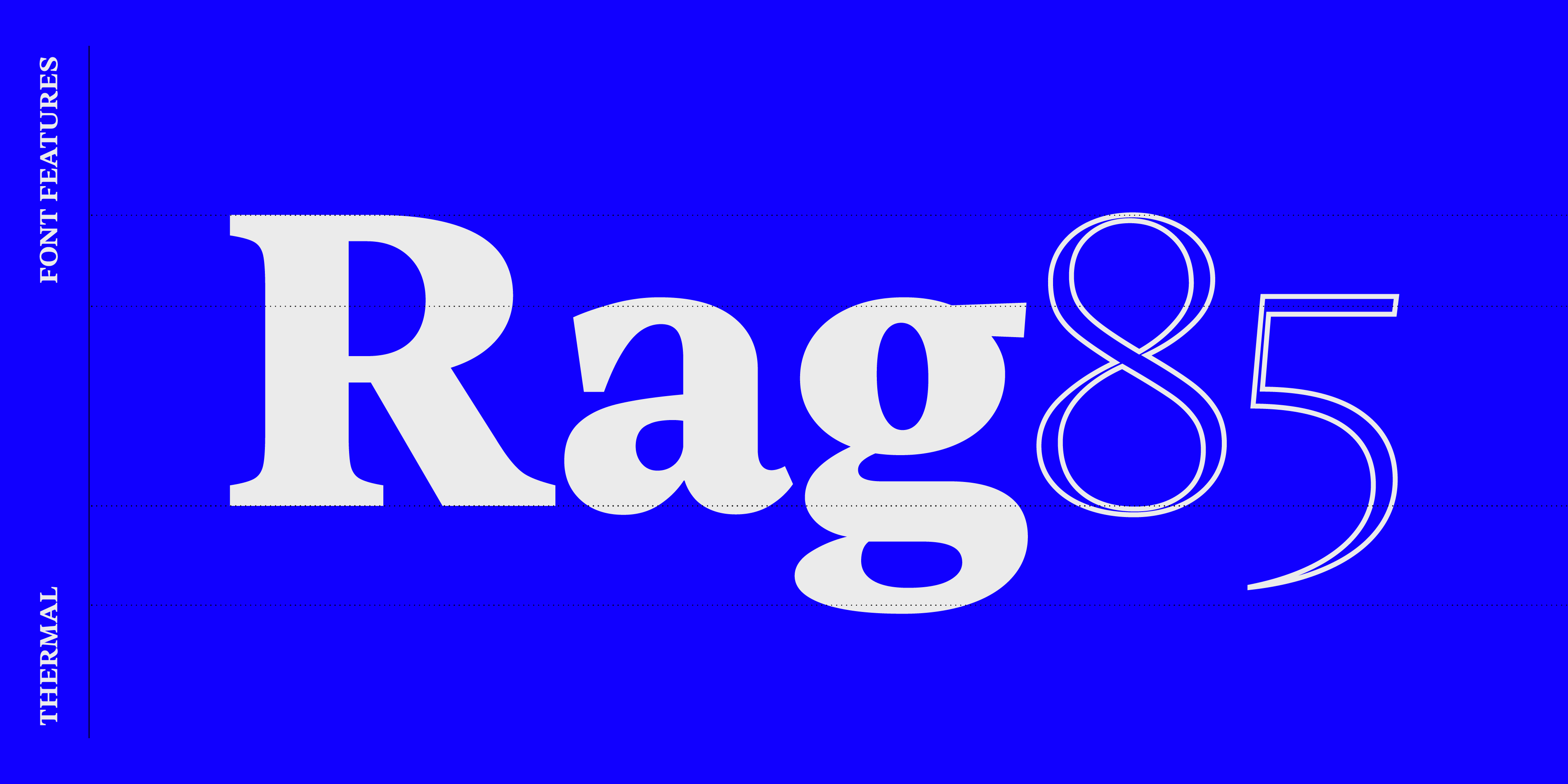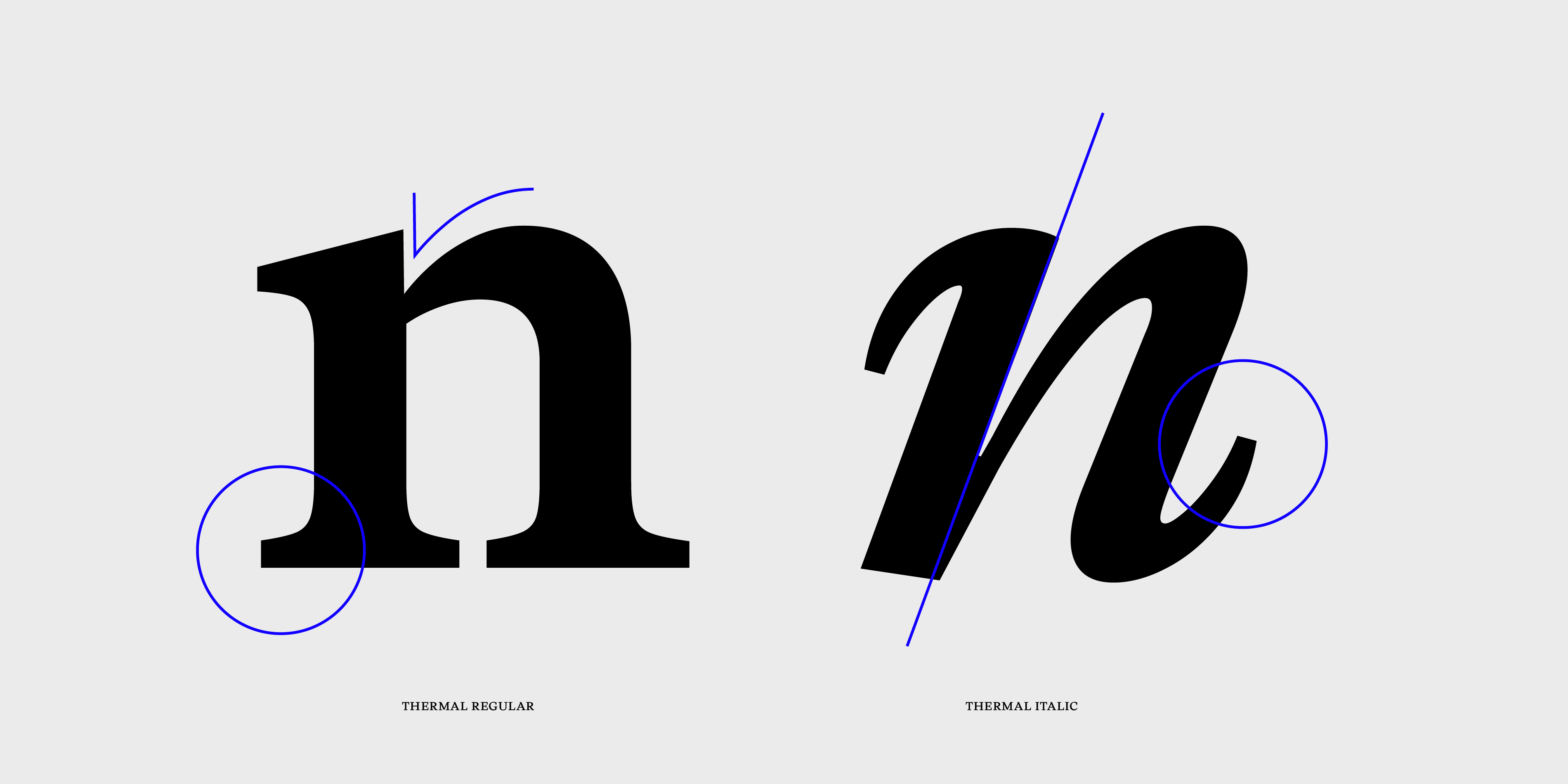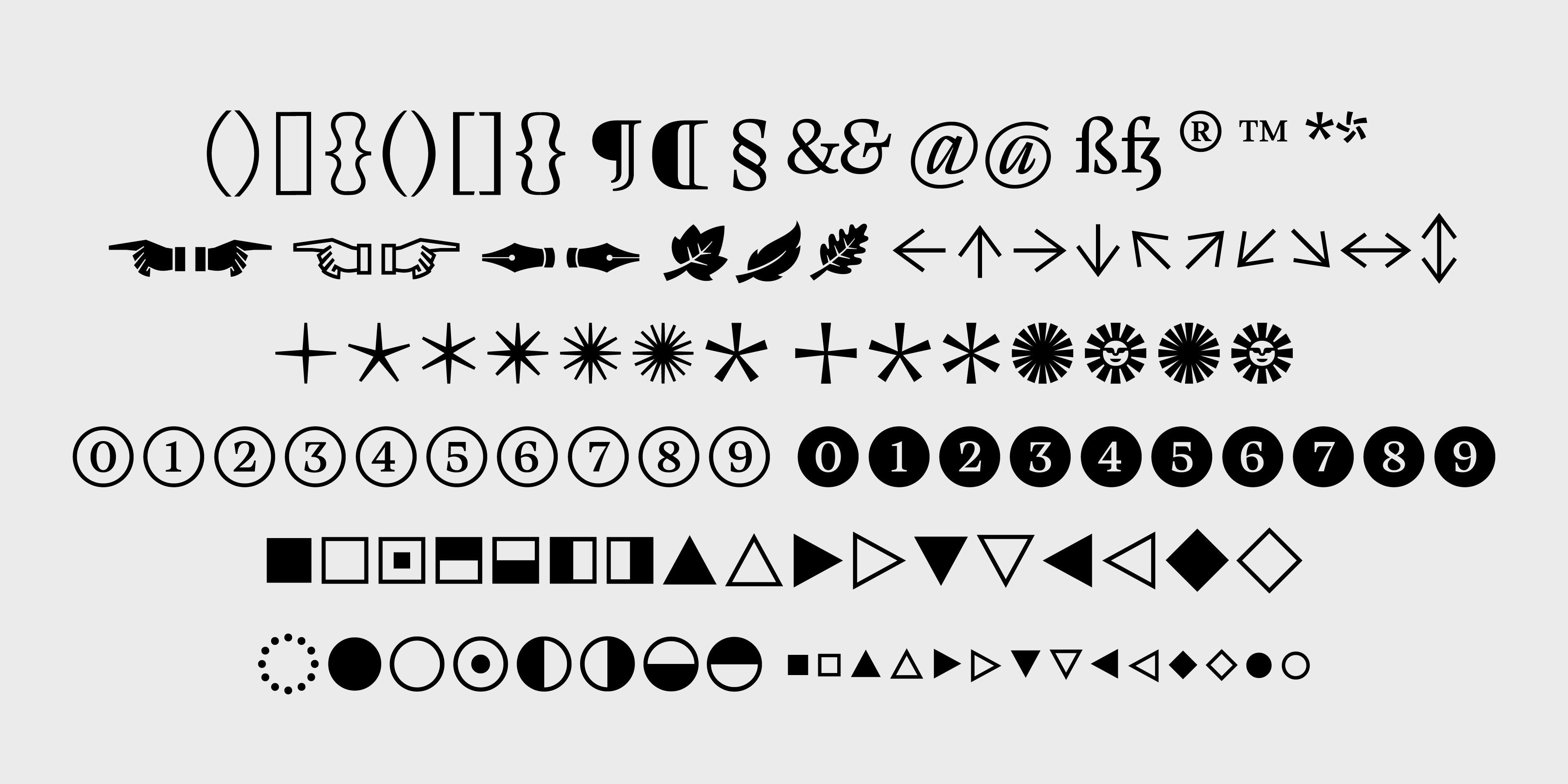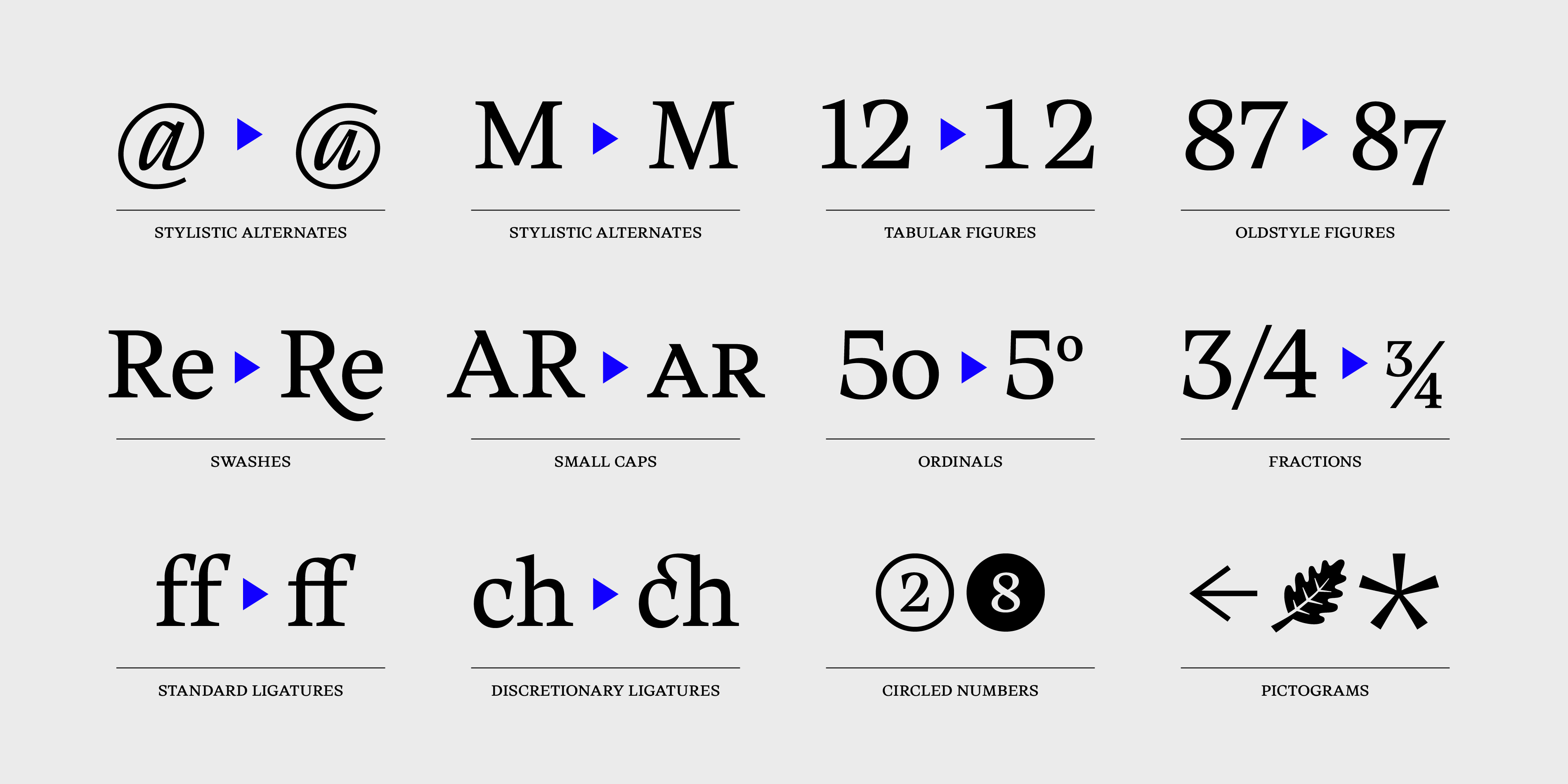Thermal-familia
From: $0.00
Purchasing a Desktop+Web license will grant an additional 25% discount. (Applied at the checkout)
Description
For other licensing options (Broadcasting, Video Game, Digital Ads, E-book, Trial, Educational, etc…) Contact Us
Prices expressed in dollars. Taxes are not included and will be calculated according to the country.
On the other end of Thermal’s design spectrum lie the extreme weights – thin and heavy –, specifically designed for larger sizes. These weights borrow stylistic cues from several distinct influences: the characteristic woodtype from the 19th century, the sharp lettering styles from the 70s, and the bold work of Oscar Ogg. One of Thermal’s disctint features is its italic’s 20° inclination, an significant inclination by all standards, this design choice finds its roots in the “Ascendonica Cursive” of 1571, but is a contemporary interpretation that generates a captivating contrast with the regular version. Thermal studies the past and analyzes the present to create a unique blend, bringing a dictint dichotomic identity.
2024 TDC Certificate for Typographic Excellence
